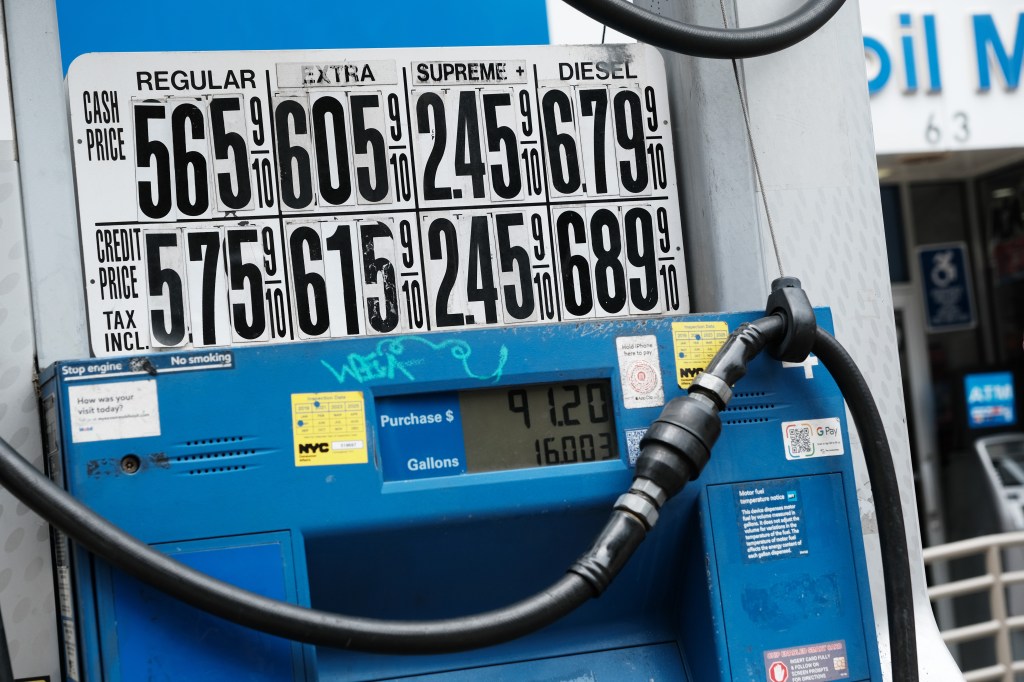We often think of electricity as a one-way transaction. Need to toast a bagel, wash the sheets, or charge your phone? Your fuse box sends you the juice you need. Electric vehicles, though, have the capacity to send power back to the electrical grid using vehicle-to-grid (V2G) technology—and that’s good news for an aging grid already operating at full capacity.
Vehicle-to-grid does this by letting electric vehicle (EV) batteries switch between providing and consuming energy on an as-needed basis. As EV adoption rates steadily climb, this technology could help stabilize the electrical grid, lessen the need for new power plants, and reduce kids’ exposure to cancer-causing exhaust. Essentially, electric vehicles can be like a backup battery for your phone, but for the entire US power grid.
Videos by VICE
“You’re looking for a vehicle that’s plugged in a decent amount of hours each day,” Marc Trahand, chief operating officer of San Diego-based V2G startup Nuvve, told me on the phone. The bigger the battery, the bigger the potential to help the electrical grid and the people using it.
Enter school buses. There are approximately 500,000 buses in the US alone, and the majority of them are basically rolling cancer machines due to their diesel engines. in 2012, the World Health Organization said diesel exhaust can definitely cause lung cancer, and might also be associated with an increased risk of bladder cancer. Meanwhile, according to the American School Bus Council, the US’s school buses consume a combined $3.2 billion worth of diesel a year.

Lance Noel, a postdoctoral V2G researcher at the Center for Energy Technologies at Aarhus University in Denmark, said school buses are not only ripe for electrification, but also V2G technology because they’re only in use for a few hours at a time. “It’s a giant battery sitting in a parking lot for at least 18 hours a day,” he told me on the phone.
Using a bidirectional charger—that is, one that is able to charge and discharge power on command dynamically using smart software—these batteries can supplement the grid in peak-demand times, and act as storage when demand is low.
The technology was created by a professor and co-founder of Nuvve, Willett Kempton, who has been working on V2G at the University of Delaware since 1996. Today Nuvve, which wants to be the intermediary between EV owners and grids, is working with automakers such as Nissan and Mitsubishi to integrate bidirectionality into batteries and chargers.
The Japanese automakers’ interest was partly piqued by the 2011 Fukushima nuclear disaster that resulted in blackouts, according to Trahand. “They realized, ‘We have all these electric cars with quite a big capacity,’” he said, adding that a Nissan Leaf could probably light up 10 houses for an evening, or a single house for far longer.
At its core, V2G advocates for the democratization of energy markets by allowing small-time players to use their vehicles to provide electricity—either to the grid, to their neighbors, or to their own homes—and potentially earn a little bit of revenue while doing so. According to PJM Interconnection, a grid operator and wholesale electricity market in the eastern half of the US, V2G tests done with electric BMW Minis earned each car user about $100 a month. Electric-vehicle owners in the US who drive 15,000 miles a year and charge exclusively at home can expect to pay $540/year in electricity costs, according to Plug In America.
Read More: These Canadians Are Building the First Commercial Electric Snowmobile
Single EVs can’t participate in this market on their own because they don’t produce enough power; they’d have to be aggregated with other vehicles to participate in the market. This is why fleets are especially attractive for V2G technology. School buses are a particularly interesting fleet to work with, not only because of their V2G capability and revenue-generating potential, but also because of their primary clientele: kids.
In the US, 25 million children collectively ride 62 billion miles a year in school buses. Many of these use diesel engines, which again have been shown to cause cancer. Kids of color and children from low-income households in particular are more likely to take transit or the school bus. Research published in the American Journal of Respiratory and Critical Care Medicine showed that diesel pollution is far worse inside of bus cabins than in the air around the vehicle. That same research shows that cleaner fuel policies positively impact children’s health.
While a grid that still largely depends on coal isn’t an ideal power source for any electric vehicle, V2G’s storage capabilities could actually help promote renewable energy like solar and wind—the output of which fluctuates depending on time of day and weather conditions—by offering unique energy storage solutions that are lacking on the existing grid.
Given how skittish some people still are about electric cars, it might take some cajoling to convince school boards and PTAs they’ve got enough range and power to safely deliver their kids to school and back.
In North America, at least a couple of major school-bus manufacturers—Blue Bird and Lion—are working on proving the benefits of electrification and vehicle-to-grid technology. Electric school buses are a particularly good candidate for V2G, said Noel and Trahand, because their range far exceeds most route distances. The lower fuel and maintenance costs make up for their higher sticker price, they added.
Noted Trahand, “It’s going to be cheaper to go electric.”
Get six of our favorite Motherboard stories every day by signing up for our newsletter .




